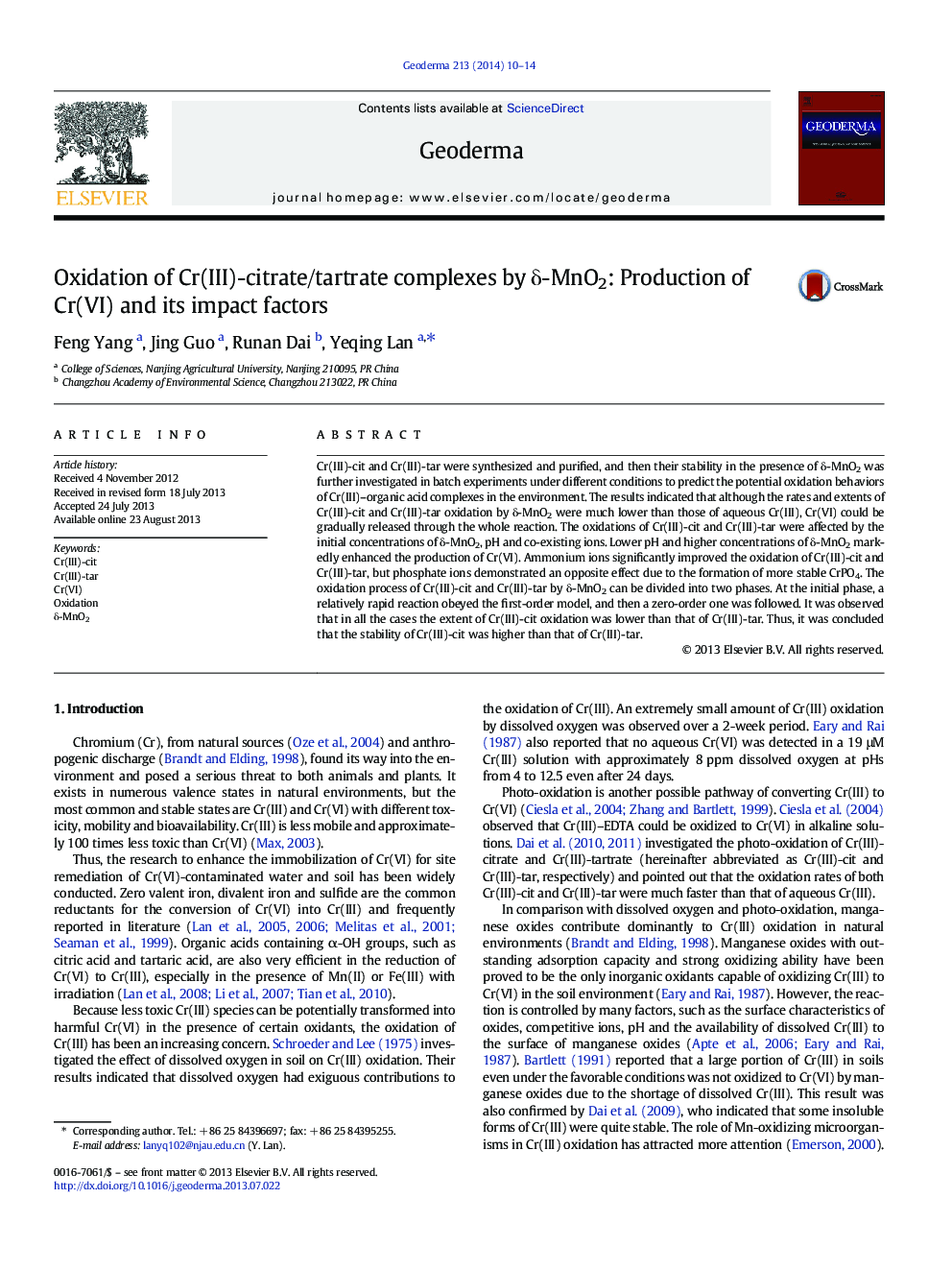| Article ID | Journal | Published Year | Pages | File Type |
|---|---|---|---|---|
| 6408921 | Geoderma | 2014 | 5 Pages |
â¢Cr(III)-cit/tar was synthesized, and then purified with cation exchange resin.â¢The oxidation of Cr(III)-cit/tar by δ-MnO2 was much lower than aqueous Cr(III).â¢The oxidation of Cr(III)-cit/tar over δ-MnO2 can be divided into two phases.â¢NH4+ significantly improved the oxidation of Cr(III)-cit/tar by δ-MnO2.
Cr(III)-cit and Cr(III)-tar were synthesized and purified, and then their stability in the presence of δ-MnO2 was further investigated in batch experiments under different conditions to predict the potential oxidation behaviors of Cr(III)-organic acid complexes in the environment. The results indicated that although the rates and extents of Cr(III)-cit and Cr(III)-tar oxidation by δ-MnO2 were much lower than those of aqueous Cr(III), Cr(VI) could be gradually released through the whole reaction. The oxidations of Cr(III)-cit and Cr(III)-tar were affected by the initial concentrations of δ-MnO2, pH and co-existing ions. Lower pH and higher concentrations of δ-MnO2 markedly enhanced the production of Cr(VI). Ammonium ions significantly improved the oxidation of Cr(III)-cit and Cr(III)-tar, but phosphate ions demonstrated an opposite effect due to the formation of more stable CrPO4. The oxidation process of Cr(III)-cit and Cr(III)-tar by δ-MnO2 can be divided into two phases. At the initial phase, a relatively rapid reaction obeyed the first-order model, and then a zero-order one was followed. It was observed that in all the cases the extent of Cr(III)-cit oxidation was lower than that of Cr(III)-tar. Thus, it was concluded that the stability of Cr(III)-cit was higher than that of Cr(III)-tar.
